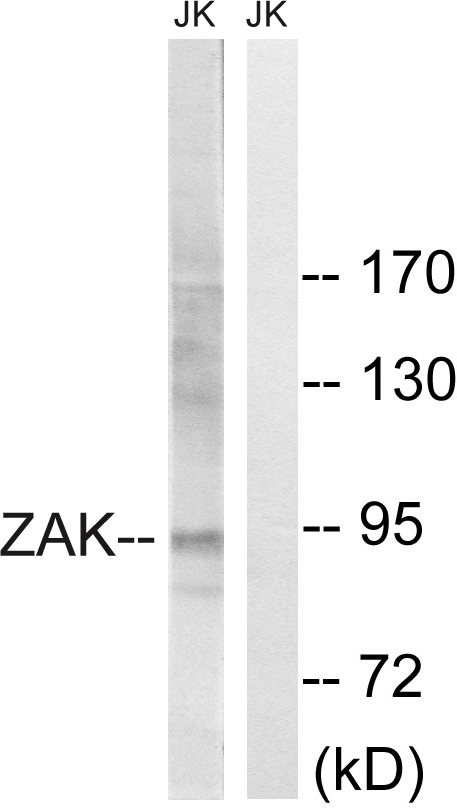ZAK antibody [N1N2], N-term
GTX111477
ApplicationsImmunoFluorescence, Western Blot, ImmunoCytoChemistry, ImmunoHistoChemistry, ImmunoHistoChemistry Paraffin
Product group Antibodies
TargetMAP3K20
Overview
- SupplierGeneTex
- Product NameZAK antibody [N1N2], N-term
- Delivery Days Customer9
- Application Supplier NoteWB: 1:500-1:3000. ICC/IF: 1:100-1:1000. IHC-P: 1:100-1:1000. *Optimal dilutions/concentrations should be determined by the researcher.Not tested in other applications.
- ApplicationsImmunoFluorescence, Western Blot, ImmunoCytoChemistry, ImmunoHistoChemistry, ImmunoHistoChemistry Paraffin
- CertificationResearch Use Only
- ClonalityPolyclonal
- Concentration1 mg/ml
- ConjugateUnconjugated
- Gene ID51776
- Target nameMAP3K20
- Target descriptionmitogen-activated protein kinase kinase kinase 20
- Target synonymsAZK, CNM6, MLK7, MLT, MLTK, MLTKalpha, MLTKbeta, MRK, SFMMP, ZAK, mlklak, pk, mitogen-activated protein kinase kinase kinase 20, HCCS-4, MLK-like mitogen-activated protein triple kinase, ZAK1 homolog, leucine zipper and sterile-alpha motif kinase, human cervical cancer suppressor gene 4 protein, mitogen-activated protein kinase kinase kinase MLT, mixed lineage kinase 7, mixed lineage kinase with a leucine zipper and a sterile alpha motif, mixed lineage kinase-related kinase MRK-beta, sterile alpha motif and leucine zipper containing kinase AZK
- HostRabbit
- IsotypeIgG
- Protein IDQ9NYL2
- Protein NameMitogen-activated protein kinase kinase kinase 20
- Scientific DescriptionThis gene is a member of the MAPKKK family of signal transduction molecules and encodes a protein with an N-terminal kinase catalytic domain, followed by a leucine zipper motif and a sterile-alpha motif (SAM). This magnesium-binding protein forms homodimers and is located in the cytoplasm. The protein mediates gamma radiation signaling leading to cell cycle arrest and activity of this protein plays a role in cell cycle checkpoint regulation in cells. The protein also has pro-apoptotic activity. Alternate transcriptional splice variants, encoding different isoforms, have been characterized. [provided by RefSeq]
- Storage Instruction-20°C or -80°C,2°C to 8°C
- UNSPSC12352203






